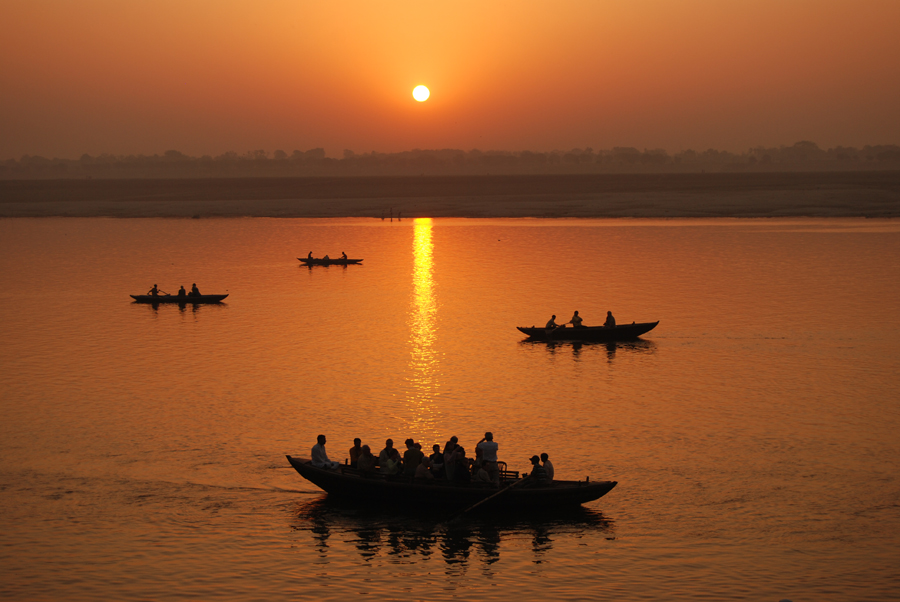At the clay-banked Asi Ghat, the southernmost in the sacred city, at the confluence of the Asi and the Ganges, pilgrims bathe prior to worshipping at a huge lingam under a peepal tree. Another lingam visited is that of Asisangameshvara, the "Lord of the Confluence of the Asi", in a small marble temple just off the ghat. Traditionally, pilgrims continued to Lolarka Kund, the Trembling Sun", a rectangular tank fifteen metres below ground level, approached by steep steps. Now almost abandoned, except during the Lolarka Mela fair (Aug/Sept), when thousands come to propitiate the gods and pray for the birth of a son, Lolarka Kund is among Varanasi’s earliest sites, one of only two remaining Sun sites linked with the origins of Hinduism. Equated with the twelve adityas or divisions of the sun, which predate the great deities of Modern Hinduism, it was attracting bathers in the days of the buddha.
Much of the adjacent Tulsi Ghat – originally Lolarka Ghat, but renamed in the honour of the poet Tulsidas, who lived nearby in the sixteenth century – has crumbled. Continuing north, above Shivala Ghat, hanuman Ghat is the site of a new temple built by the ghat’s large south Indian community. Considered by many to be the birth place of the fifteenth-century Vaishnavite saint Vallabha, who was instrumental in in the resurgence of the worship of Krishna, the ghat also features a striking image of Ruru, the dog Bhairava, a ferocious and early form of Shiva.
Named for a legendary king said to have almost lost everything in a fit of self-abnegation, Harishchandra Ghat, one of the Varanasi’s two cremation of burning ghats, is easily recognizable from the smoke of its funeral pyres.
Further north, the busy Kendra Ghat is ignored by pilgrims on the Panchatirthi Yatra. Above its steps, a red-and-white-striped temple houses the Kedareshvara lingam, an outcrop of black rock shot through with a vein of white. Mythologically related to Kedarnath in the Himalayas, Kedara and its ghat become a hive of activity during the sacred month of Sravana (July/Aug), the month of the rains. Shubh Yatra Happy Travelling.
Much of the adjacent Tulsi Ghat – originally Lolarka Ghat, but renamed in the honour of the poet Tulsidas, who lived nearby in the sixteenth century – has crumbled. Continuing north, above Shivala Ghat, hanuman Ghat is the site of a new temple built by the ghat’s large south Indian community. Considered by many to be the birth place of the fifteenth-century Vaishnavite saint Vallabha, who was instrumental in in the resurgence of the worship of Krishna, the ghat also features a striking image of Ruru, the dog Bhairava, a ferocious and early form of Shiva.
Named for a legendary king said to have almost lost everything in a fit of self-abnegation, Harishchandra Ghat, one of the Varanasi’s two cremation of burning ghats, is easily recognizable from the smoke of its funeral pyres.
Further north, the busy Kendra Ghat is ignored by pilgrims on the Panchatirthi Yatra. Above its steps, a red-and-white-striped temple houses the Kedareshvara lingam, an outcrop of black rock shot through with a vein of white. Mythologically related to Kedarnath in the Himalayas, Kedara and its ghat become a hive of activity during the sacred month of Sravana (July/Aug), the month of the rains. Shubh Yatra Happy Travelling.







No comments:
Post a Comment